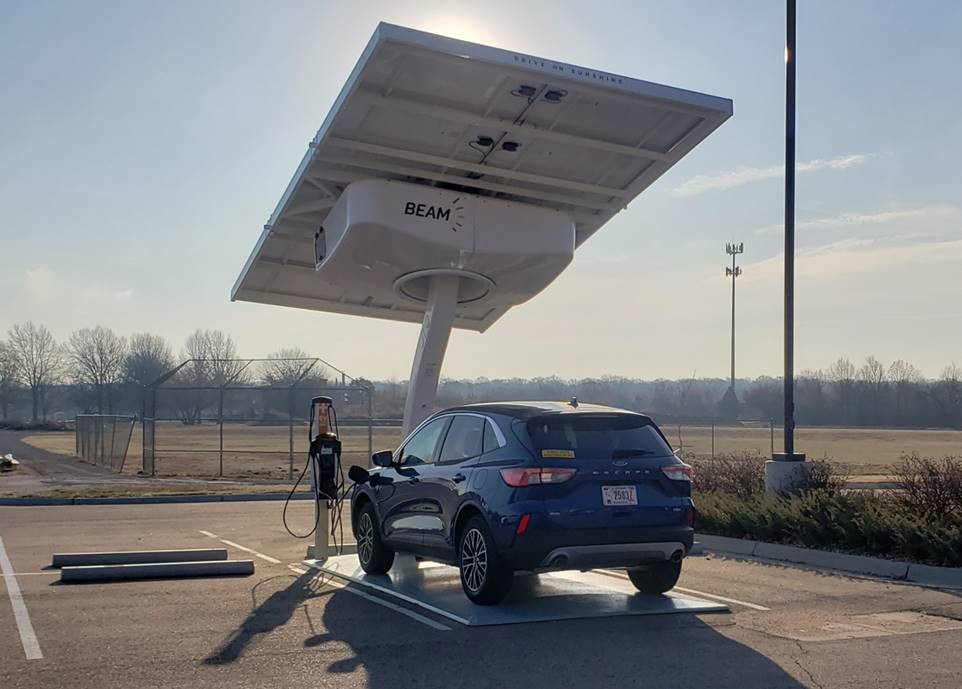Energy, Environment, and Fleet Program
Energy, Environment, and Fleet (EEF) Program Service facilitates VA’s efforts to comply with federal mandates related to energy, water, environment, fleet, sustainable buildings and climate change adaptation and resiliency. EEF formulates VA-level policy; provides oversight, guidance and training; and completes required Department-level reporting. EEF also coordinates enterprise-level operations of VA’s energy and fleet portfolio, including managing VA’s Energy Performance Contracting Program and VA’s Fleet Management Program.
Learn about VA’s sustainability efforts including sustainability planning, climate adaptation and agency performance data, from the White House Council on Environmental Quality page for VA.
Program service achievements
Energy and water management
VA recognizes that, when conducting its mission to care for Veterans, it has a responsibility to minimize environmental and energy-related impacts. This can be accomplished through measures to conserve energy and water usage. VA employs a variety of methods to ensure its facilities are as efficient as possible by conducting building surveys, performing assessments, upgrading equipment and infrastructure, and tracking energy and water usage.
Energy and water assessments
Every four years, each VA medical center conducts energy and water assessments to determine how to upgrade and improve the facility’s efficiency. These assessments yield results for investments and energy conservation measures, which range from replacing windows and lighting to upgrading the heating, ventilation and air conditioning or control systems.
Commissioning
All VA medical centers go through commissioning every four years.
Commissioning is a cost-effective approach that helps facilities control utility costs by ensuring that building systems can be operated and maintained according to the facility’s needs. It provides benefits such as extended equipment life and lower operating costs and leads to better building efficiency.
Metering
VA has installed electric metering systems at all VA medical centers to track energy usage and intensity. VA has also installed non-electrical meters that track a facility’s use of water, chilled water, steam and natural gas. These meters help VA determine the ideal locations for conducting energy and water conservation measures.
Energy performance contracts
Energy savings performance contracts (ESPCs) and utility energy service contracts (UESC)s are contracting vehicles that allow Federal government agencies to partner with private sector companies and utilities to install energy and water conservation measures without the need for upfront appropriations. Private sector companies take on the performance risk of the equipment and obtain competitive financing from a third-party lender. The government agency pays them back over time from the energy and water savings associated with the more efficient equipment. These contracts provide a solution to more immediately upgrade aging infrastructure and critical building systems when appropriations are not readily available.
VA has awarded $1.1 billion in upgrades at 88 medical centers through ESPCs and UESCs with private sector investment since 2011. These contracts are repairing and replacing critical energy and water infrastructure and are expected to avoid more than $1.6 billion of energy and water costs for VA facilities over the life of these contracts.
VA awards ESPCs through our ESPC SDVOSB IDIQ, which was originally awarded to four companies on May 21, 2020, with an additional two on-ramped in March 2022. The current list of awardees is:
- CTI-OES Joint Venture (OES is now Engie)
- TLS-CES Joint Venture (CES is now RWE)
- US2 (now partnered with Southland)
- Venergy-Brewer Garret Joint Venture [Joint venture has since been disbanded]
- HICAPS (partnered with Trane)
- HSGS-Ameresco Joint Venture
The Department of Energy provides additional information and resources about ESPCs and UESCs.
Vehicle fleet efficiency and effectiveness

VA’s Fleet Management Program within EEF serves as the Department-level vehicle fleet management office while providing fleet management leadership, policy, and guidance to VA organizations. The VA Fleet Management Program monitors, coordinates and reports on fleet management activities at the Department level.
In accordance with Executive Order 14057, VA is pursuing a transition of its fleet of over 22,000 vehicles to zero-emission vehicles (ZEVs). Through these efforts, VA is acquiring ZEVs through the General Service Administration as part of the annual vehicle lease replacement cycle while also planning for the installation and deployment of electric vehicle charging solutions.
Alternative fuel vehicle compliance reports
The following reports were published below as required by the Energy Policy Act of 1992, 42 USC 13218(b). Fiscal Year (FY) 2019 was the final year of this report requirement.
Archived Office of Management and Budget Scorecards
- FY 2019 (PDF, 12 pages)
- FY 2018 (PDF, 12 pages)
- FY 2017 (PDF, 14 pages)
- FY 2016 (PDF, 14 pages)
- FY 2015 (PDF, 29 pages)
- FY 2014 (PDF, 18 pages)
- FY 2013 (PDF, 17 pages)
- FY 2012 (PDF, 17 pages)
- FY 2011 (PDF, 19 pages)
- FY 2010 (PDF, 19 pages)
- FY 2009 (PDF, 16 pages)
- FY 2008 (PDF, 13 pages)
- FY 2007 (PDF, 12 pages)
- FY 2006 (PDF, 10 pages)


